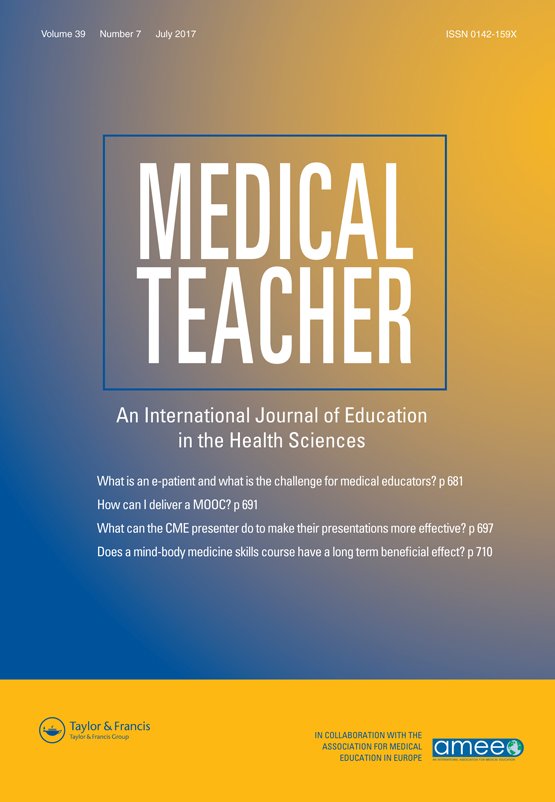
Breathing in the abdomen can have many health benefits. The diaphragm is able to expand and contract to move air around the body. This technique is effective for a variety of health issues, from back pain to stress. This technique can also relieve tension and pain in the shoulders and chest. First, lay down on a flat surface. You may need to use a pillow to ensure a comfortable position. Start by placing your hand on your stomach. Next, breathe slowly through the nose. Afterward, exhale through pursed lips.
Start practicing abdominal breathing by sitting straight up in a chair. Begin by placing your palm on your stomach. Notice how your belly rises and falls as you breathe. Feel your abdomen expand like a balloon. Repeat this exercise for about 20 minutes a day. You will be able, naturally, to inhale from your abdomen without any distractions by the end of the exercise.

You can also practice diaphragmatic breathing in the seated position. During this exercise, you should relax your neck, shoulders, and head. Also, keep your shoulders relaxed. Your symptoms will decrease if you start diaphragmatic breathing. Try this technique when you're rested and your chest is open. Next, take a look at the breathing exercises and decide which one offers you the best relief.
It is important to understand that not all breathing exercises are suitable for everyone. Your primary physician can provide you with good advice tailored to your particular condition. Talk to a cardiac specialist or a respiratory specialist if you have any questions regarding breathing from the stomach. You will be glad that you did. They'll be happy to answer your questions and help you learn the right technique for your needs. Don't worry if you have difficulty breathing. Just follow these tips and you'll be on your way to a healthier life.
Breathing from your belly will increase alertness and concentration. The diaphragm transfers pressure from high-pressure areas of the body into the low-pressure abdomen. While this strategy is beneficial for many people, it's not for everyone. Your breathing technique may be important if you have chronic lung diseases. This will improve your ability to breathe efficiently and reduce shortness.

Talk to a mental health professional to learn more about how to breathe from the stomach. They can help you to improve your breathing and decrease stress. Talk to a licensed fitness specialist or a physical therapist if it's difficult for you to do it yourself. The most important thing is to stay consistent. If you aren't sure where to start, these techniques will help. You can practice breathing exercises whenever you feel calmer.
FAQ
Do I need to count calories?
You may be wondering "what is the best diet for you?" or "is counting calories necessary?" It depends on many factors such as your current health, personal goals, preferences, and overall lifestyle.
The Best Diet For Me - Which One Is Right For You?
The best diet depends on me, my health, my goals, my preferences and my overall lifestyle. There are many different diets, some good and some not so good. Some diets work for some people, while others are not. So what do I do? How do I make the right decision?
These are the questions that this article attempts to answer. It starts with a brief introduction of the different types of diets available today. The pros and cons of each diet are then discussed. We'll then discuss how to choose which one is best for you.
Let's start by taking a look at the various types of diets.
Diet Types
There are three main types of diets: low fat, high protein, and ketogenic. Let's take a look at them all below.
Low Fat Diets
A low fat diet is a diet that restricts the amount of fats consumed. This is done by reducing your intake of saturated oils (butter, cream cheeses, etc.). These fats can be replaced with unsaturated fats like avocados and olive oil. For those looking to lose weight quickly, a low-fat diet is often recommended. This diet can cause problems such constipation as heartburn, indigestion, and even stomach pain. It can also lead to vitamin deficiencies, if someone doesn't get enough vitamins in their food.
High Protein Diets
High protein diets discourage carbohydrates and encourage the use of proteins. These diets have higher protein levels than other diets. They are meant to help build muscle mass and burn more calories. Unfortunately, they can't provide adequate nutrition for those who eat regularly. They can also be very restrictive so they may not be suitable for everyone.
Ketogenic Diets
The keto diet is also known as the keto diet. They are high in fat and moderate in protein and carbs. They are commonly used by athletes and bodybuilders, as they allow them train harder and more frequently without getting tired. You must adhere to all side effects, including fatigue, headaches, nausea and headaches.
Improve immunity with herbs and supplements?
To boost immunity function, herbs and natural remedies are available. Ginger, garlic, ginger, echinacea and ginkgo biloba are some of the most common.
These herbs should not be considered as a substitute for conventional medical treatment. Side effects can include nausea, dizziness, stomach cramps and dizziness.
What is the problem of BMI?
BMI is the acronym for Body Mass Index. It measures body fat based upon height and weight. Here is how to calculate BMI using the following formula.
Add weight in kilograms to height in meters squared.
The result can be expressed as a number between zero and 25. Scores of 18.5 and higher indicate overweight, while scores of 23 and higher indicate obesity.
A person who is 100kg and 1.75m tall will have a BMI 22.
Which are the top 10 foods you should eat?
The 10 best foods to eat include:
-
Avocados
-
Berries
-
Broccoli
-
Cauliflower
-
Eggs
-
Fish
-
Grains
-
Nuts
-
Oats
-
Salmon
Why is it important that we live a healthy and happy life?
Having a healthy lifestyle helps us live longer, happier lives. A healthy diet, regular exercise and good sleep habits will prevent the development of diseases such as heart disease, stroke, cancer, diabetes, and Alzheimer's.
A healthy lifestyle will also improve our mental health by helping us cope better with everyday stresses. Healthy living will boost self-confidence and make you look and feel younger.
What is the difference among a virus or a bacterium and what are their differences?
A virus is an organism microscopic that can't reproduce outside its host cells. A bacterium, a single-celled organism, reproduces by splitting into two. Viruses measure only 20 nanometers in diameter, but bacteria is up to 1 millimeter in size.
Viruses are usually spread through contact with infected bodily fluids, including saliva, urine, semen, vaginal secretions, pus, and feces. Bacteria are usually spread through direct contact with contaminated objects or surfaces.
Viral infections can be transmitted through skin cuts, scrapes and bites. They can also enter the body through the mouth, nose, eyes and ears, vaginal, rectum or anus.
Bacteria can get into our bodies through cuts, scrapes and burns, insect bites, or other skin breaks. They can also get into our bodies via food, water or soil.
Both bacteria and viruses cause illness. But viruses do not have the ability to multiply within their hosts. So they only cause illnesses when they infect living cells.
Bacteria may spread to other people and cause sickness. They can invade other areas of the body. That's why we need antibiotics to kill them.
Is it possible to have a weak immune system due to being cold?
It has been said that there are two types of people on the planet: those who love winter, and those who don't. But whether you love or hate it, you may find yourself wondering why you feel so lousy when it's cold out.
The truth is that our bodies are built to work best when it's warm. Our bodies were designed to thrive in hot weather because this is where the majority of our food sources are.
Today's environment is vastly different from the one our ancestors experienced. We spend more time indoors, are exposed to extreme temperatures (cold/heat), and eat processed food rather than fresh.
Because of this, our bodies have become accustomed to extremes. When we do venture out, our bodies are unable to cope with the extremes.
However, there are ways to counter these effects. One way is to make sure that you stay well-hydrated throughout the day. Hydration is key to keeping your body well hydrated, flushing out toxins and keeping your system healthy.
A healthy diet is another important thing. Eating nutritious foods helps your body maintain its optimal temperature. This is especially beneficial for those who spend extended periods of time inside.
It is worth taking a few extra minutes each day to meditate. Meditation can relax your mind and make it easier manage stress and illness.
Statistics
- In both adults and children, the intake of free sugars should be reduced to less than 10% of total energy intake. (who.int)
- Extra virgin olive oil may benefit heart health, as people who consume it have a lower risk for dying from heart attacks and strokes according to some evidence (57Trusted Source (healthline.com)
- WHO recommends reducing saturated fats to less than 10% of total energy intake; reducing trans-fats to less than 1% of total energy intake; and replacing both saturated fats and trans-fats to unsaturated fats. (who.int)
- According to the 2020 Dietary Guidelines for Americans, a balanced diet high in fruits and vegetables, lean protein, low-fat dairy and whole grains is needed for optimal energy. (mayoclinichealthsystem.org)
External Links
How To
What does "vitamin" actually mean?
Vitamins can be described as organic compounds found in food. Vitamins help us absorb nutrients from foods we eat. Vitamins are not made by the body, so they must be obtained through food.
There are two types vitamins: water soluble or fat soluble. Water soluble vitamins dissolve easily in water. These include vitamin C (thiamine), Vitamin B1 (riboflavin), Vitamin B2 (riboflavin), Vitamin B3 (niacin), Vitamin B6 (pyridoxine), Vitamin C, B1 (thiamine), Vitamin B2 (riboflavin), Vitamin B3 (niacin), and Vitamin B6 (pyridoxine). The liver and fat soluble vitamins are stored within the liver and in fatty tissue. Examples include vitamin D, E, K, A, and beta carotene.
Vitamins are classified according to their biological activity. There are eight major vitamin groups:
-
A - Essential for healthy growth and health maintenance.
-
C – essential for proper nerve function.
-
D – Essential for healthy teeth, bones and joints
-
E is needed for good reproduction and vision.
-
K - Required for healthy nerves and muscles.
-
P - vital for building strong bones andteeth.
-
Q - Aids digestion and iron absorption
-
R - necessary for making red blood cells.
The recommended daily allowance (RDA), for vitamins, varies depending upon age, gender, or physical condition. The U.S. Food and Drug Administration, (FDA), sets the RDA value.
For adults over 19 years, the RDA is 400 mg per day for vitamin A. Pregnant women require 600 micrograms daily to support fetal development. Children ages 1-8 require 900 micrograms per day. Infants under one year of age require 700 micrograms per day, but this amount decreases to 500 micrograms per day between 9 months and 12 months of age.
Children aged between 1-18 years require 800 micrograms of sugar per day, while overweight children need 1000 micrograms. Children who are underweight receive 1200 micrograms every day to meet their nutritional requirements.
2200 mg of vitamin A per day is required for children aged 4-8 who have been diagnosed by anemia.
Adults over 50 years of age need 2000 micrograms per day for general health. Women who are pregnant or breastfeeding need 3000 micrograms per day due to increased nutrient requirements.
1500 micrograms are required daily by adults over 70 because they lose approximately 10% of their muscle each decade.
Women who are pregnant, nursing or breastfeeding need more than the RDA. Pregnant mothers need 4000 micrograms per daily during pregnancy and 2500 after giving birth. Breastfeeding mothers require 5000 micrograms daily when breast milk production is occurring.